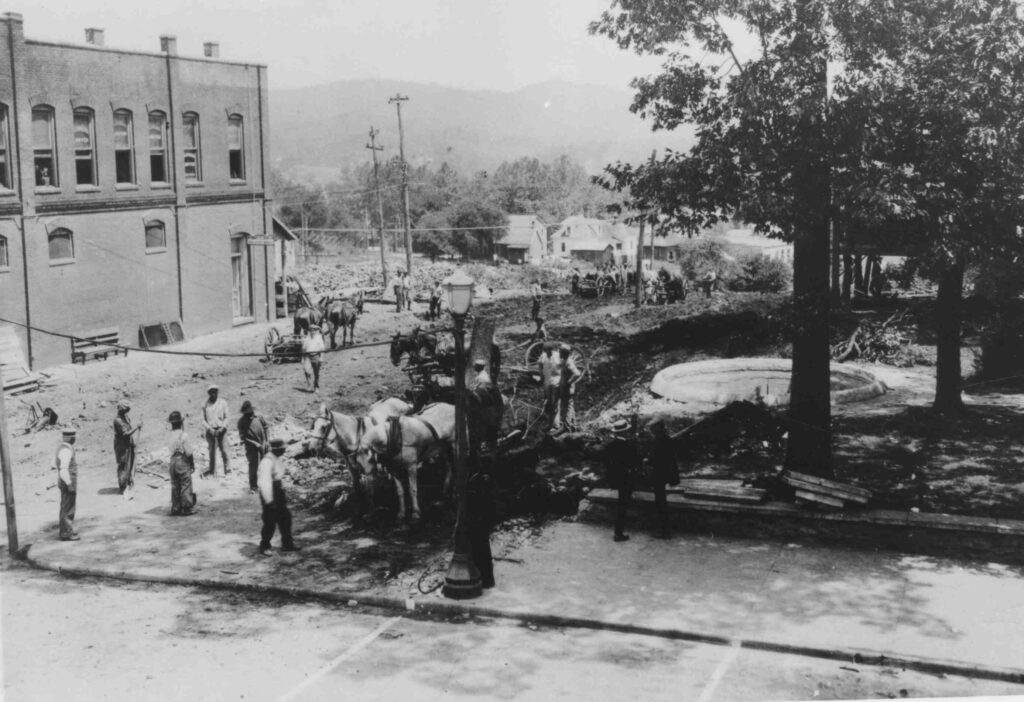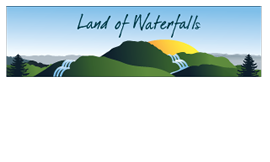
When Brevard was created as a county seat in 1861, the town founders mapped out what the donated land on top of the hill would look like. Some may be surprised to learn that when it was originally created, Broad Street did not extend down “Jailhouse Hill,” but instead dead-ended just past the courthouse. The fire station was placed directly at the center of what is now North Broad Street, and at the terminus of what was then simply Broad Street. Roads were packed dirt and weren’t paved until the mid-1920s when downtown improvements added paved streets, concrete sidewalks, and electric street lighting to the main business and shopping district in the town center.
Electric lights were first added to the streets of Brevard with much fanfare in spring 1924. At this time in history, gas lighting was the most common form of street lighting. Electric lighting was first publicly installed in New York City, NY in the 1880s. The brilliantly illuminated strip of the city’s famed Broadway became known as “The Great White Way”. As smaller towns also modernized and installed electric lighting over the next several decades, it was common for the public messaging to state the area was getting its own White Way, which can be seen in the Brevard News article from April 16, 1924 that announces Brevard will “have its own White Way in ninety days.” The article goes on to state that thirty of the most modern Westinghouse lights would be added to the central streets of downtown Brevard. One example of these lights can be seen in the construction photo included in this article.
Paving was next. Though the wheels of government sometimes move slowly, the project for paving Brevard and the surrounding area was in motion for at least the next two years. Frequent newspaper articles in 1925-1926 give updates about the paving progress, statistics for the number of miles that have been paved, and adjacent articles mention paving efforts throughout the state, almost as though the writers were reminding the inconvenienced residents about the need for Transylvania to keep up with the progress of other communities.
The last, and perhaps most dramatic, transformation of town center in Brevard was when North Broad Street was created. As previously mentioned, Broad Street once ended just past the courthouse, with the fire station directly in the path of the road. That structure was essentially a small, wooden garage. In 1928 the fire station moved to a new location on West Main Street. This gold-tone brick building was relatively new, having been built on speculation by prolific local builder Robert Porter Kilpatrick in 1926. The original occupant of the building was K&M Auto Repair on the upper level. At the time, the building was close enough to a slope that the second story exited onto the street level of the road parallel to Main Street (Poor Street at the time). The first floor was rented out and operated as a Union Bus station. This arrangement only lasted a few months before the City of Brevard rented the building. The first floor was used as the fire station, and the second story was used for City Hall functions. The rental agreement lasted until 1938 when the current fire station and city hall were built across the street. The historic Brevard City Hall and Fire Station, now a locally recognized historic landmark, still stands and is currently occupied by Drew Deane Art Gallery and Canto 34 Coffee Lounge.




